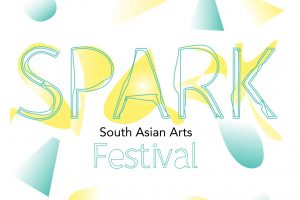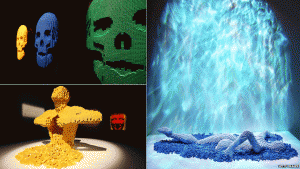 In Nov-Dec 2017 six Birmingham community arts organisations either based in and/or working with a range of communities from Sparkhill or Sparkbrook, came together to produce Spark: South Asian Arts Festival, a number of events designed with and by local people and curated by local arts organisation Ort Gallery. The Festival consisted of two weeks of films, music, arts, crafts, street art, theatre, poetry, food and more.
In Nov-Dec 2017 six Birmingham community arts organisations either based in and/or working with a range of communities from Sparkhill or Sparkbrook, came together to produce Spark: South Asian Arts Festival, a number of events designed with and by local people and curated by local arts organisation Ort Gallery. The Festival consisted of two weeks of films, music, arts, crafts, street art, theatre, poetry, food and more.
Arts and Heritage education specialist and Festival volunteer Jess Harrison, working with Pauline Roche from RnR Organisation who managed the social media for Ort Gallery during the Festival, carried out some pilot audience surveys at a few of the many events, and in this post she shares some of her thoughts and insights about small community arts organisations gathering and sharing data:
““We encourage our funded organisations to be more focused on audiences – to reach more people, broaden the groups they come from and improve the quality of their experience” Engaging people everywhere, Arts Council
Why share data?… to provide actionable insight about audiences and non-attenders, to enable communication directly with audiences or participants – Why share data?, Arts Council
Why gather and share data among small community arts organisations?
– Understanding audiences better leads to a) better programming which directly addresses their needs, and b) better marketing which can reach further across or deeper into particular sectors.
– Arts organisations face a number of challenges including lack of funding, facilities and staff; sharing data means that we can use our resources to everyone’s best advantage
My personal experience in gathering data from this festival:
– The benefits: directly engaging with people who’ve come to see shows, particularly asking open ended questions and gathering qualitative data
– The challenges: choosing what data to gather; gathering enough data to be representative and deciding what to do with the data when it’s been collected (ideally, this should be decided by the organisation before collecting the data)
Four practical recommendations for other small organisations collecting data:
– Have a clear idea of WHY you’re gathering data and WHAT you’ll do with it
– Be flexible and diverse in gathering data – be prepared to use a number of different methods (i.e. both paper-based and electronic)
– ‘Stitching’ data types together can give us more insights i.e. “track ticket purchasers, measure and map audiences, note accounts, compare web analytics, monitor social, share data, share donors” Data culture #1: back to (data) basics Patrick Hussey, The Guardian, Mar 29th 2012
– Make active connections with other local organisations in order to share data and practices”
Want to get involved in this local data gathering and sharing?
Following the successful Spark Festival project, there is now a legacy project which is exploring the development of arts activity/community arts activity within the Sparkbrook/Sparkhill area which will include data gathering and sharing.
If you want further details of this project, or our other work around data-informed decision-making, please contact RnR Organisation at RnR.Organisation@gmail.com
 Cllr Karen McCarthy totally ignored St Patrick’s Festival in her introduction to the Cultivating Culture symposium on 18th March, focusing on Art Soak festival (Selly Oak) and Flat Pack. She promoted engagement in cultural activity as well as utilisation of artistic activity and the engagement and encouraging of individuals in arts / cultural activity – so, are the 80,000 people on the streets of Digbeth on March 16th and attendances at several related events in the week leading up to the Parade on Sunday not prime examples of this?
Cllr Karen McCarthy totally ignored St Patrick’s Festival in her introduction to the Cultivating Culture symposium on 18th March, focusing on Art Soak festival (Selly Oak) and Flat Pack. She promoted engagement in cultural activity as well as utilisation of artistic activity and the engagement and encouraging of individuals in arts / cultural activity – so, are the 80,000 people on the streets of Digbeth on March 16th and attendances at several related events in the week leading up to the Parade on Sunday not prime examples of this?